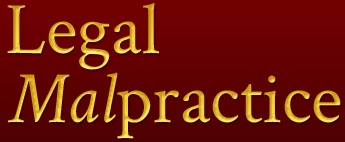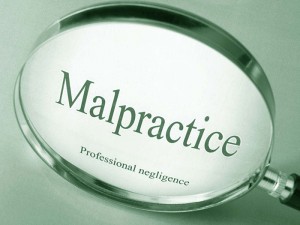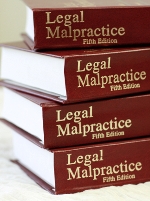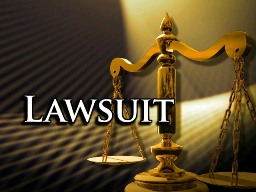 Wrong Word in Contract Leads to $2M Malpractice Suit
Wrong Word in Contract Leads to $2M Malpractice Suit
Daily Report Online reported that Taylor English Duma, a 133-lawyer firm based in Atlanta, and one of its partners, have been sued for malpractice for allegedly mis-drafting a purchase agreement.
Background
Alpharetta, GA-based Opsolve, LLC provides support services to energy companies.
It agreed to purchase all of the stock of software company Enercom, in 2013. Taylor English partner Jeff Woodward represented OpSolve in the acquisition.
OpSolve claims that the agreed purchase price was Enercom’s 2013 revenue minus a guaranteed payment of $275,000, with the total payment capped at $730,000.
Enercom’s 2013 revenue was about $513,000, so under the agreed-upon formula, the purchase price should have been about $238,000.
However, OpSolve alleges that the agreement drafted by Woodward called for a purchase price of Enercom’s 2013 revenue plus $275,000, again capped at $730,000.
As a result, Enercom’s shareholders demanded $455,000 plus the guaranteed payment—a difference of $217,000. (It’s unclear where the $455,000 figure comes from: $513,000 + $275,000 =$788,000, which would be reduced to $730,000, per the cap. This is the amount Enercom should’ve demanded, if the contract was for revenues plus $275,000, adjusted for the cap).
Litigation
OpSolve alleges that “rather than admitting his negligence and mistake, (Woodward) instead chose to influence his client OpSolve in a manner which required OpSolve to pursue litigation,” against Enercom.
Enercom presented OpSolve with a demand letter, which was rejected, and then sued OpSolve in May 2014, in Fulton County Superior Court.
OpSolve’s defense strategies included that a “mutual mistake” was made by both parties in drafting the agreement, and that it contained “ambiguities” that should allow it to be reformed under Georgia law.
“Predictably, however, the litigation strategy was disastrous,” OpSolve claimed, and cost it “substantial and completely unnecessary legal fees on top of the additional amounts it already owed to Enercom under the clear and unambiguous terms” of the agreement.
OpSolve alleges that two other Taylor English partners, Patton and Weber, reviewed the agreement and Enercom’s demand letter at Woodward’s request; Woodward then advised OpSolve to reject it.
Three months later, Weber sent a memo to Patton, warning that Enercom’s court filings provided “ample support for their legal argument” that the purchase agreement was “unambiguous on its face.”
She also asked whether Enercom had “raised the issue” of Georgia’s frivolous litigation statute. “I think we need to be cautious of how we proceed given the arguments we are
attempting to raise potentially lack both legal and actual authority.”
A few days later, Patton advised OpSolve’s managing partner via email, that “absent clear evidence” that Enercom “understood the deal the same way we did, we will not win” on the issue.
Patton also advised Woodward in a private email that, “At this point, my opinion is that we are throwing good money after bad” defending the case, and “allowing opposing counsel to run up their legal fees.”
OpSolve claims that Woodward never told it that his colleague Patton had recommended that OpSolve honor the agreement as written and get out of the suit, and that “Woodward persisted in the position that his work was correct and that OpSolve could prevail in the litigation, contrary to the advice” of his colleagues.
In October 2014, Enercom issued a settlement demand for $600,000: $455,000 owed under the contract plus $150,000 in attorney fees and expenses.
OpSolve rejected the demand on the advice of its counsel.
In September 2015, the Court granted Enercom summary judgment on all of its claims.
The parties then agreed to a mediation, at which the matter was settled.
OpSolve alleges that Woodward’s “disastrous” advice to litigate the matter threatened to drive it into bankruptcy.
Aftermath
OpSolve claims that Woodward emailed its managing partner Carr after the settlement, offering to “touch base tomorrow on how [Taylor English] can help with the costs.”
OpSolve then “communicated with [Taylor English] in an attempt to recoup their damages…However, despite Woodward’s tacit admission to committing malpractice and causing harm to OpSolve”, no assistance was forthcoming.
OpSolve’s malpractice counsel said that Taylor English neither offered assistance nor responded to his efforts to discuss the case. “They in essence forced this issue…They never offered anything. They never responded to the demand letter” that he sent in December, 2015.
Malpractice Claim
OpSolve sued Taylor English and Woodward in January, 2017 in Fulton County Superior Court, for legal malpractice, breach of fiduciary duty, breach of contract, and punitive damages, as well as a claim under a Georgia statute that permits the recovery of fees from a party that has been “stubbornly litigious”, and acted in bad faith.
OpSolve seeks more than $600,000 in damages on each of three counts, litigation expenses of at least $150,000, the disgorgement of more than $182,000 in fees it paid Taylor English, and punitive damages of more than $500,000.
Firm’s Response
Taylor English’s general counsel, John Gross said “We are confident that the legal work we provided to OpSolve far surpassed what it has alleged, and we intend to defend this baseless claim vigorously on behalf of our firm and our lawyers.”
Analysis
Assuming OpSolve’s allegations are correct, then there was an obvious risk management failure on Atty. Woodward’s part in not catching the error in the contract.
This wasn’t a misspelling, etc., so it’s not something that a proofreader would likely have caught. It was thus incumbent on Woodward, as the contract drafter, to review the document, and ensure that it reflected his intent.
Further, if he did make the mistake as alleged, he should’ve admitted it. Instead, he apparently compounded his error by not admitting it, and instead encouraging OpSolve to litigate Enercom’s lawsuit, and raise meritless defenses, i.e., “mutual mistake” and “ambiguities” in the contract.
On the other hand, Enercom’s attorney presumably reviewed the contract before Enercom signed it, and discovered the error. If so, wasn’t he or she ethically obligated to point it out? And if not obligated, how about doing it anyway, as a matter of honesty? Instead, Enercom appears to have played “gotcha” with OpSolve.
Also, Woodward’s colleague Patton emailed OpSolve’s managing partner that “absent clear evidence” that Enercom “understood the deal the same way we did, we will not win” on the issue. However, Enercom must have understood the deal the same way OpSolve did, i.e., the agreed-upon price was “revenues minus” , not “revenues plus”, otherwise, Woodward didn’t make a mistake, and there’d be no grounds to sue him for malpractice.
There presumably was a paper trail of emails, letters, phone call notes, contract drafts, etc., stating that the terms were ‘minus’, not ‘plus’. Why not use that to seek rescission of the contract, i.e., present it to the court in response to Enercom’s suit, as proof that the wording in the contract was due to a unilateral error by OpSolve’s counsel, and didn’t reflect the parties’ intent?
If the answer to that is that the courts are reluctant to void a contract due to one party’s mistake, especially when that party was represented by counsel, then Woodward and Taylor English should’ve advised OpSolve to pay Enercom before Enercom filed suit.
The firm should also have considered paying for its mistake, including involving its legal malpractice insurer, many of which offer pre-claim assistance to head off the possibility of a malpractice claim being filed.
By not doing those things, Taylor English invited a malpractice claim, and it got one.





